If you notice leaf miners on your plants, you may not be sure what to do. Do you leave them alone or remove the leaves with leaf miners? We had the same problem and set out to find the best solution. Below, we have outlined findings from top-rated sources.
Removing leaves with leaf miners is one method of ridding your plants of these harmful pests. However, if you have more than a few affected leaves, this method will be unsightly. Instead, use sprays, covers, decoy plants, or helpful insects to protect your crop from leaf miners.
Don't stop reading yet. Follow along as we delve deeper into methods for getting rid of leaf miners. By the end of this article, you will better understand where leaf miners come from, if they are harmful, and what they do to your plants.
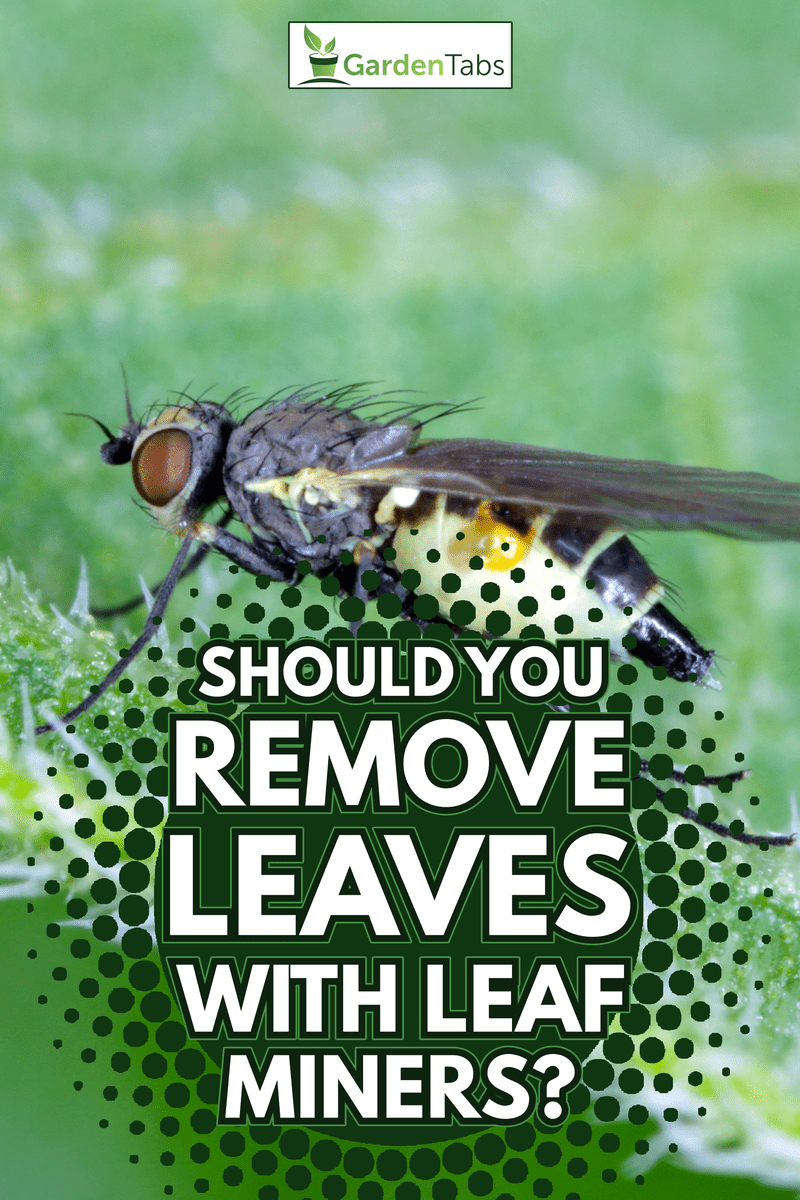
What are Leaf Miners?
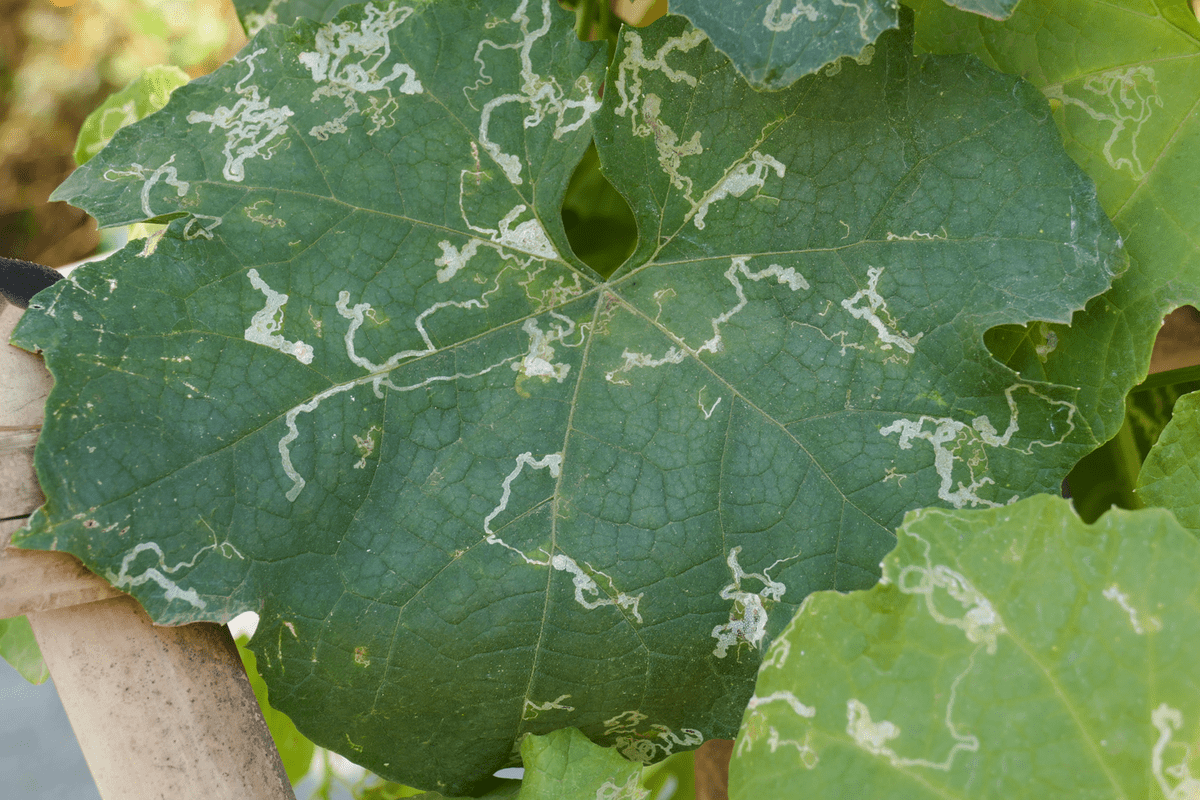
Have you ever noticed squiggly lines on the leaves of trees or other vegetation? You may have just assumed it was a natural aspect of the plant. However, this occurrence is what we refer to as leaf miners.
Leaf miners are not one particular pest. Instead, it is a blanket term used to describe the larvae of a range of insects, including flies and moths.
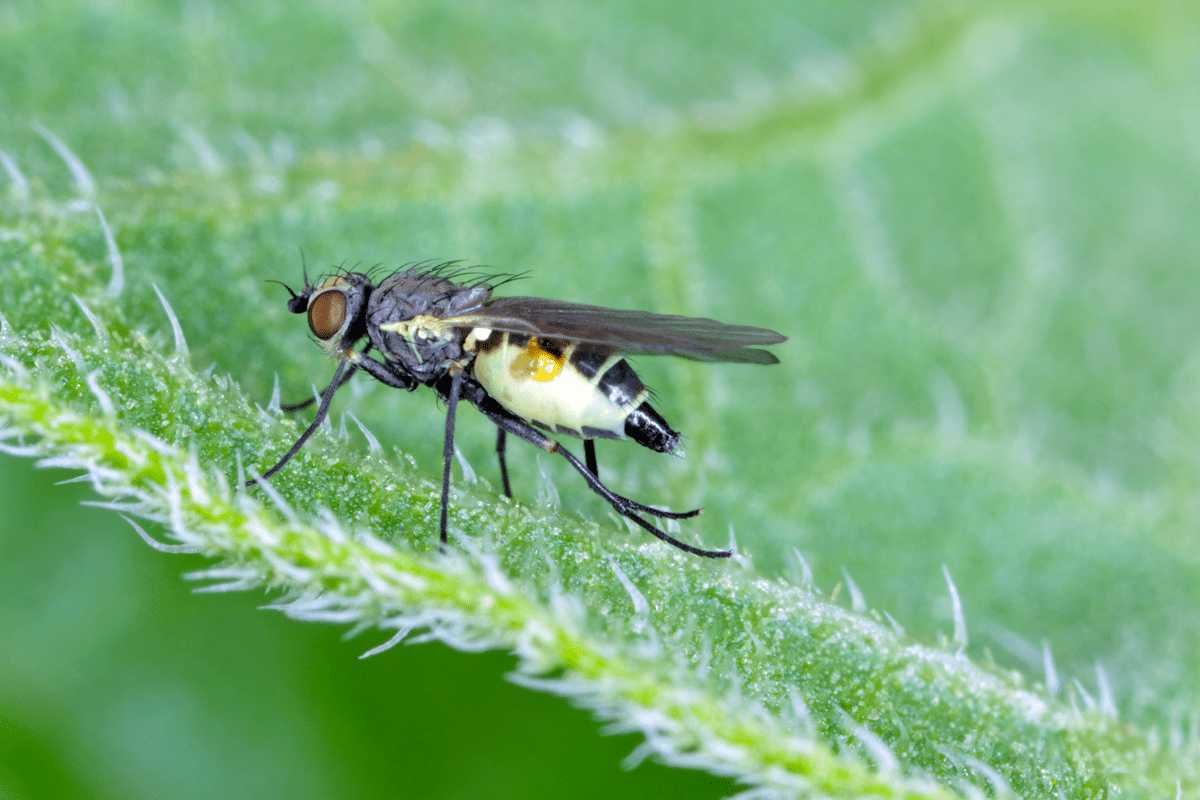
When these bugs are ready to lay their eggs, they do so on the underside of plants, injecting them into the leaves. Some females can lay upward of 250 eggs at a time, which can hatch in as little as 10 days.
Upon hatching, the larvae then begin tunneling their way into the leaves. Within two or three weeks, they exit the leaves and burrow into the ground below, emerging fully grown in 15 days.
How to Get Rid of Leaf Miners
Although leaf miners are not particularly harmful to plants, the damage is visually unappealing and can cause leaf drop. Before deciding on a method to rid your crop of leaf miners, Michigan State University recommends confirming the presence of larvae to rule out disease.
Since the leaf miner life cycle is fairly rapid, once they grow and exit your plants, another generation will be on its way soon. Therefore, it's best to stop this cycle before it begins.
Remove Leaves with Leaf Miners
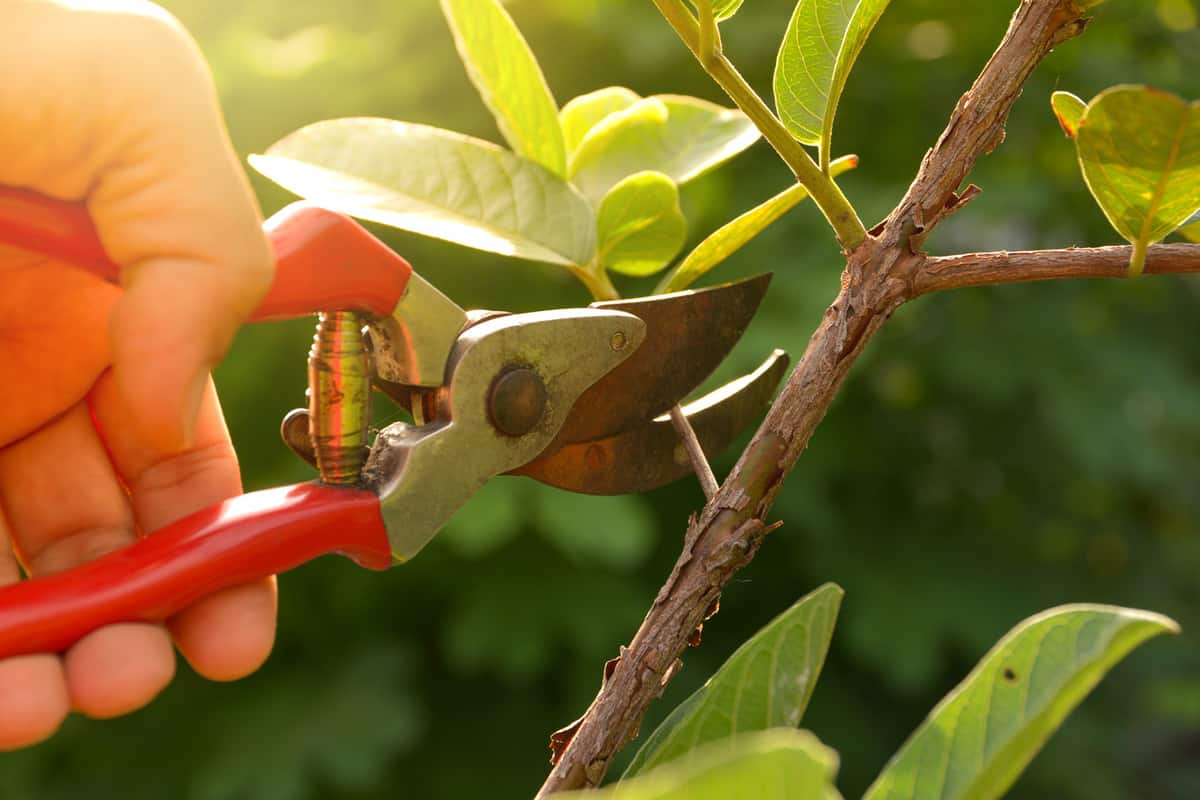
If your crop has minimal damage, you can simply remove the affected leaves. Likewise, squeezing the damaged areas will kill the leaf miner larvae. Avoid placing damaged leaves in the compost bin. However, if you experience a surplus of damage, this will not be the best method for getting rid of leaf miners.
Insecticides
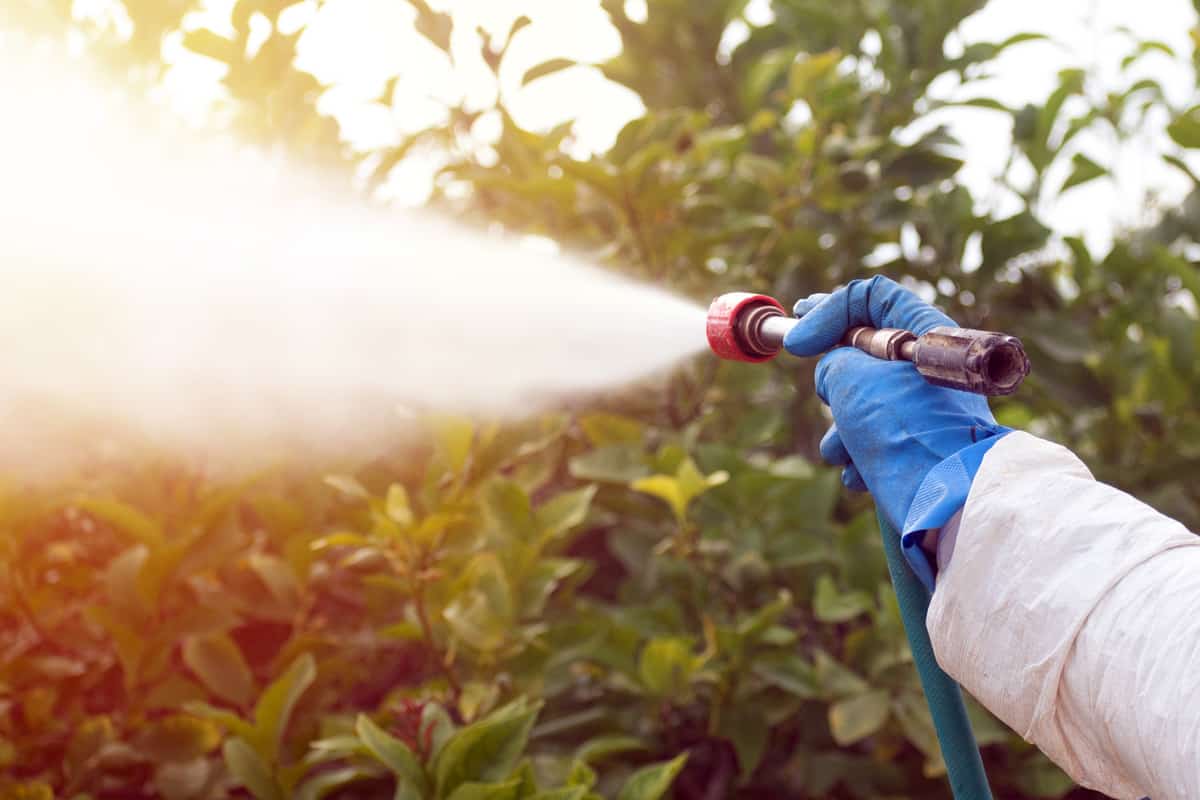
Spray-On Insecticide
If you notice leaf miner damage, you can use an insecticide spray to kill the larvae. However, keep in mind that the larvae are inside the leaves. Therefore, not all sprays will reach them.
Evaluate the product to make sure it is approved for leaf miners and will be absorbed into the plant. Depending on the product you choose, it is usually best to repeat treatment every 7 to 14 days.
Click here to view this product on Amazon.
Neem Oil Natural Insecticide
If you are looking for a natural remedy for leaf miners, give neem oil a try. Unlike other insecticides, it won't kill the adults or larvae immediately.
However, the effect on adults keeps them from flying away once they come in contact with the oil. They will stop eating and eventually die. Any larvae that come in contact with the oil will also slowly die.
Systemic Insecticide
One of the best ways to get rid of leaf miners is by using systemic insecticides. Not only will it get rid of pests, but it will also prevent them. Systemic insecticides work differently than others. Instead of coating the plants to kill bugs, you mix the product and apply it to the soil.
Make sure to do this early in the season. The plant will then absorb the substance through its roots, dispersing the chemical throughout the entire plant, effectively killing any insects before they have a chance to lay eggs.
Additionally, if there are any larvae present, they will die once the chemical reaches the leaves. Most products are designed to last all year.
Click here to view this product on Amazon.
Decoy/Trap Crops
If you are not interested in using insecticides, you can try to deter adult flies from laying their eggs on your plants by utilizing decoy crops. There are certain plants that are more appealing to leaf miners than others.
Therefore, planting decoys somewhere close to your intended crop will attract adult miners to those instead. Some good trap crops include columbine, lambsquarter and velvetleaf.
Traps
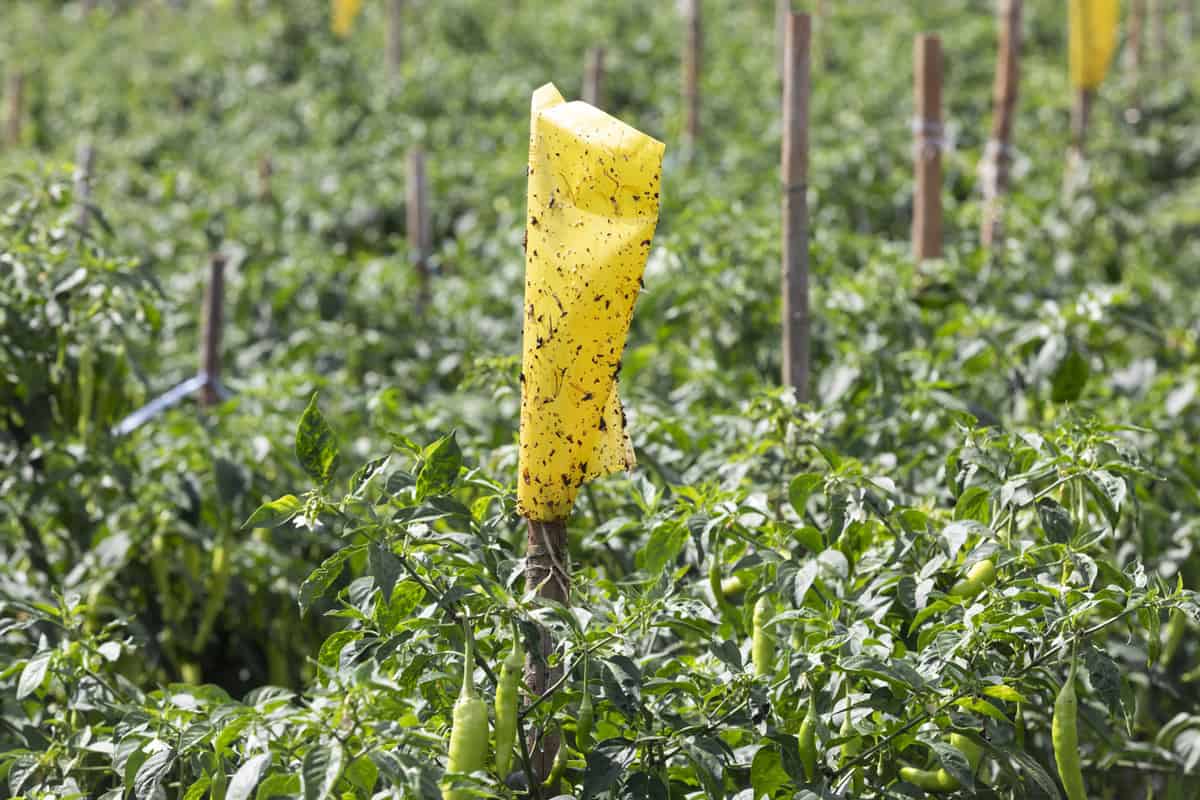
Sticky Traps
Sticky traps are pretty much the same thing as fly traps. You hang the strips on or next to your plants, and the flies will get stuck in the trap, preventing them from landing on your foliage. However, unlike other methods, this one can be a bit unsightly.
Click here to view this product on Amazon.
Paper Traps
Unlike sticky traps, paper traps include the use of lures. The lure gives off a pheromone that attracts males. Therefore, you will need to purchase a device that corresponds to the specific types of plants you are trying to protect.
For example, if you have citrus trees, you will order citrus leafminer traps. Assemble the paper devices according to instructions, and place the lure inside.
Click here to see this kit on Amazon.
Crop Barriers
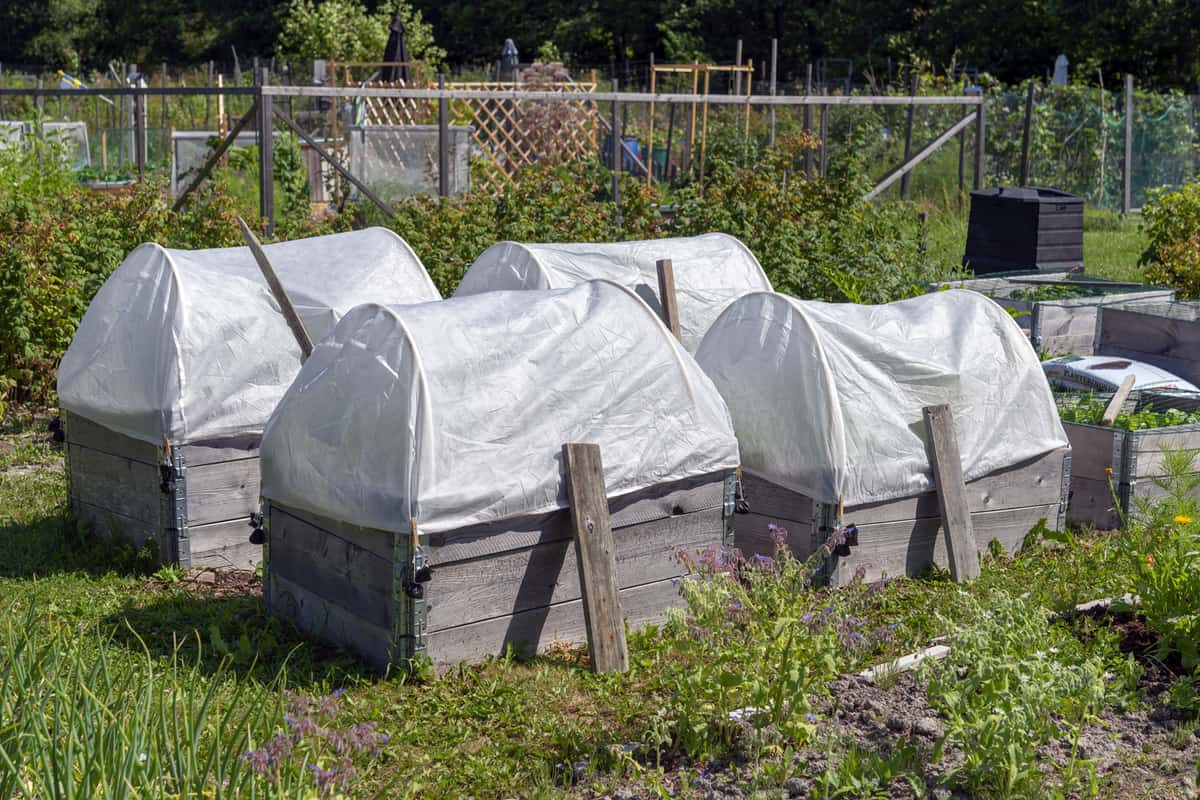
There are two types of crop barriers that help prevent leaf miners. Since adult flies land on leaves and lay their eggs, you can place a plastic cover over your plants to prevent flies from getting to them.
However, you must do this early in the season. If you trap leaf miners inside the barrier, they will continue the life cycle from within the covering.
Another effective barrier covers the soil in which your crops are planted. When the larvae emerge from leaves, they drop to the ground and burrow deep within the soil.
After 15 days, they exit the soil as adults. Therefore, the barrier prevents mature larvae from burrowing into the earth and prevents adults from exiting the ground and continuing their lifecycle.
Parasitic Wasps
Don't panic when we tell you to hatch wasps in your garden. Diglyphus isaea, the parasitic wasps that prey on leaf miners, are not harmful to humans and do not sting. These small, black wasps kill leaf miner larvae and lay their eggs inside them.
Once the wasp eggs hatch, the resulting larvae eat the deaf leaf miners. Wasps will remain in the tunnel until fully grown before emerging to continue the life cycle.
Additional Questions
Can You Eat Plants with Leaf Miners?
It is perfectly safe to eat plants with leaf miners. Most people prefer to toss away affected leaves or cut around the damage; however, eating damaged leaves will not make you sick or infect you with a parasite.
It is also helpful to note that you cannot get rid of a leaf miner by simply brushing it away. This is because the larvae are inside the plant, not on top of it.
Are Leaf Miners Harmful?
When it comes to people, leaf miners are not harmful in any way, and the damage they cause to plants is minimal. Unlike other insects that feed on leaves, leaf miners do not eat the foliage in a manner that creates holes. Instead, leaf miners consume plant tissue such as cellulose and tannins.
Although the damage can be visually unappealing, it usually does not significantly harm the plant. In more severe cases, however, leaf drop may occur. Although leaf miners do not directly harm plants, plants become more susceptible to bacteria and viruses, after the insects mature and exit the leaves.
What Do Leaf Miners Look Like?
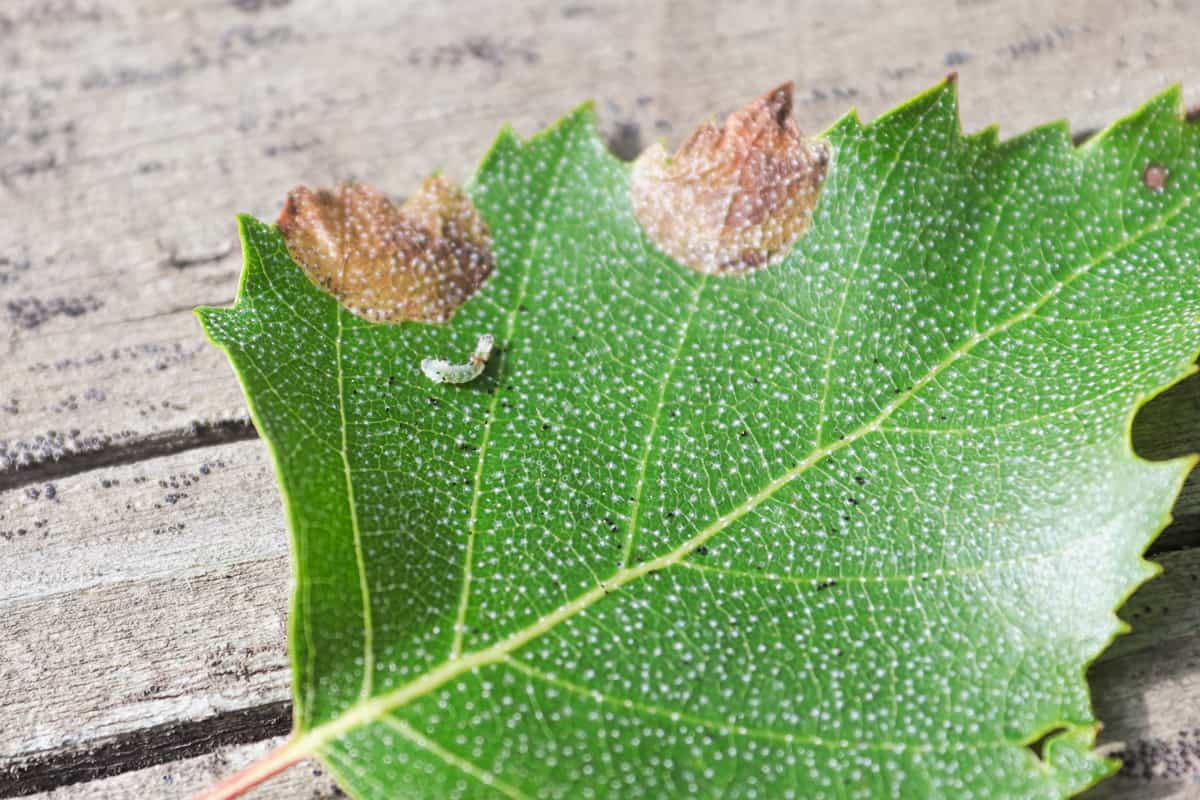
There are different types of leaf miners. Most adults look like small, black flies. Some, however, are moths. All leaf miner larvae typically look the same. They appear as tiny green worms inside leaves.
You can identify them by the damage they cause to plants. Oftentimes, they create lines across leaves that look like tunnels. Sometimes, however, the larvae can cause damage in splotches. If you are unsure if the spots on your plants were caused by miners, tear the leaf to peer inside.
Conclusion
Leaf miners cause unsightly damage to your plants. However, this damage is mostly cosmetic and does not significantly affect the plant. You can remove leaves with leaf miners, but this option will be tedious if you have a large infestation.
Instead, it is better to use parasitic wasps, decoy plants, and insecticides to get rid of leaf miner larvae and adults.
If you still have questions regarding leaf miners or tending to a garden, check out the following useful tips from our blog:
12 Types Of Leaf Miner Insects That Could Be In Your Garden
Can Neem Oil Kill Leaf Miners?




